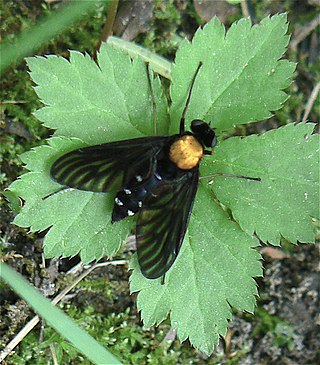
Chrysopilus is common, worldwide genus of predatory snipe flies. There are approximately 300 species in the genus, including fossil members that are sometimes found in amber.

Rhagionidae or snipe flies are a small family of flies. They get their name from the similarity of their often prominent proboscis that looks like the beak of a snipe.
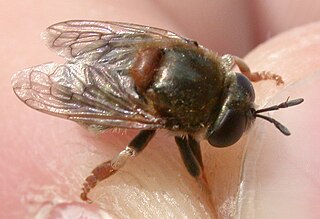
Hover flies of the genus Microdon are unusual among the Diptera. Like other members of the subfamily, they are myrmecophiles, meaning they inhabit the nests of ants.
Lixophaga is a genus of flies in the family Tachinidae.
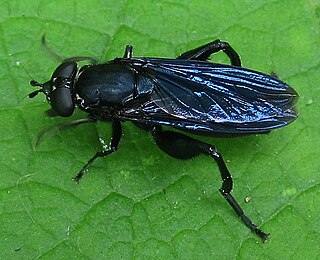
Chalcosyrphus is a genus of hoverflies in the subfamily Eristalinae. Many species exhibit some degree of mimicry of various sawflies and other hymenopterans and are often brightly coloured or metallic in hue. The adults are similar in structure and behavior to the related genus Xylota but differ in larval morphology. They can be found throughout Europe, Asia, and North America and seem to prefer damper, boggy habitats. The larvae are saproxylic feeders in rotten wood in these habitats.

Milesia is a genus of very large hoverflies, which mimic social wasps. For example, the European species Milesia crabroniformis is a convincing mimic of the hornet species Vespa crabro. Milesia are predominantly Palaeotropical in distribution almost entirely Oriental.
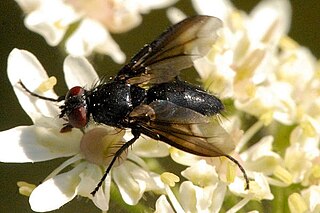
Voriini is a tribe of flies in the family Tachinidae. More junior homonyms exist of Wagneria than any other animal genus name.
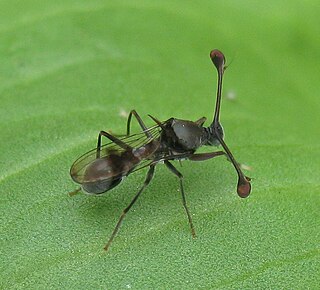
Diasemopsis is a genus of stalk-eyed flies in the family Diopsidae. They are known from sub-Saharan Africa.

Pachygastrinae is a subfamily of flies in the family Stratiomyidae.

Sarginae is a subfamily of soldier flies in the family Stratiomyidae. There are at least 20 genera and 490 described species in Sarginae.
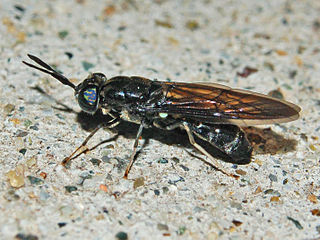
Hermetia is a genus of flies of the family Stratiomyidae.

Solva is a fly genus in the family Xylomyidae, the "wood soldier flies".

Cyphomyia is a genus of flies in the subfamily Clitellariinae.
Diopsina is a genus of stalk-eyed flies in the family Diopsidae.
Suragina is a genus of flies in the family Athericidae.
Brachycara is a genus of flies in the family Stratiomyidae.
Chrysochromioides is a genus of flies in the family Stratiomyidae.











